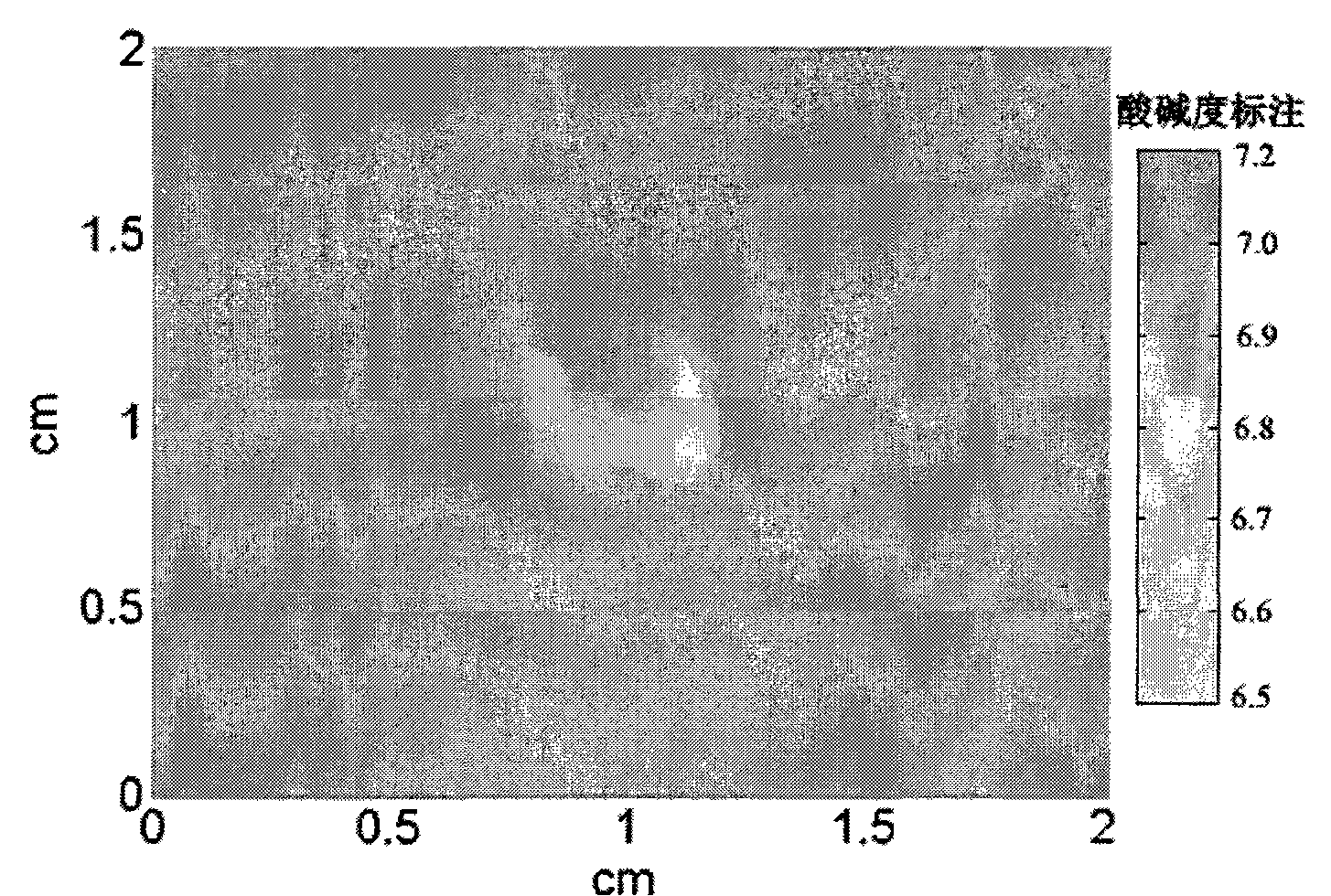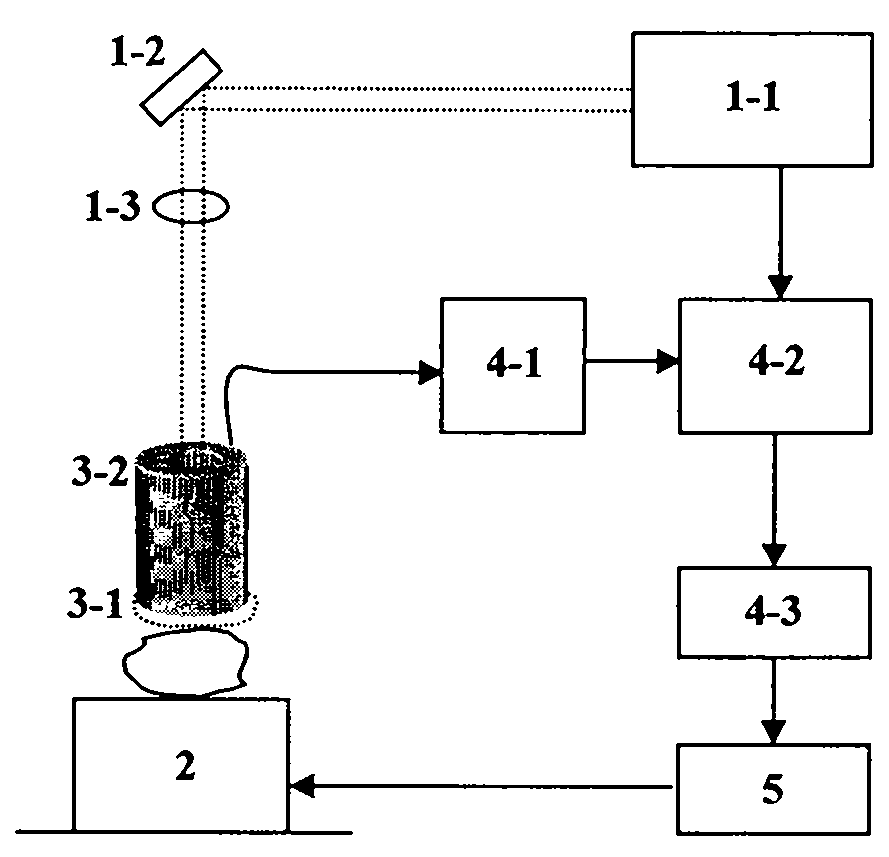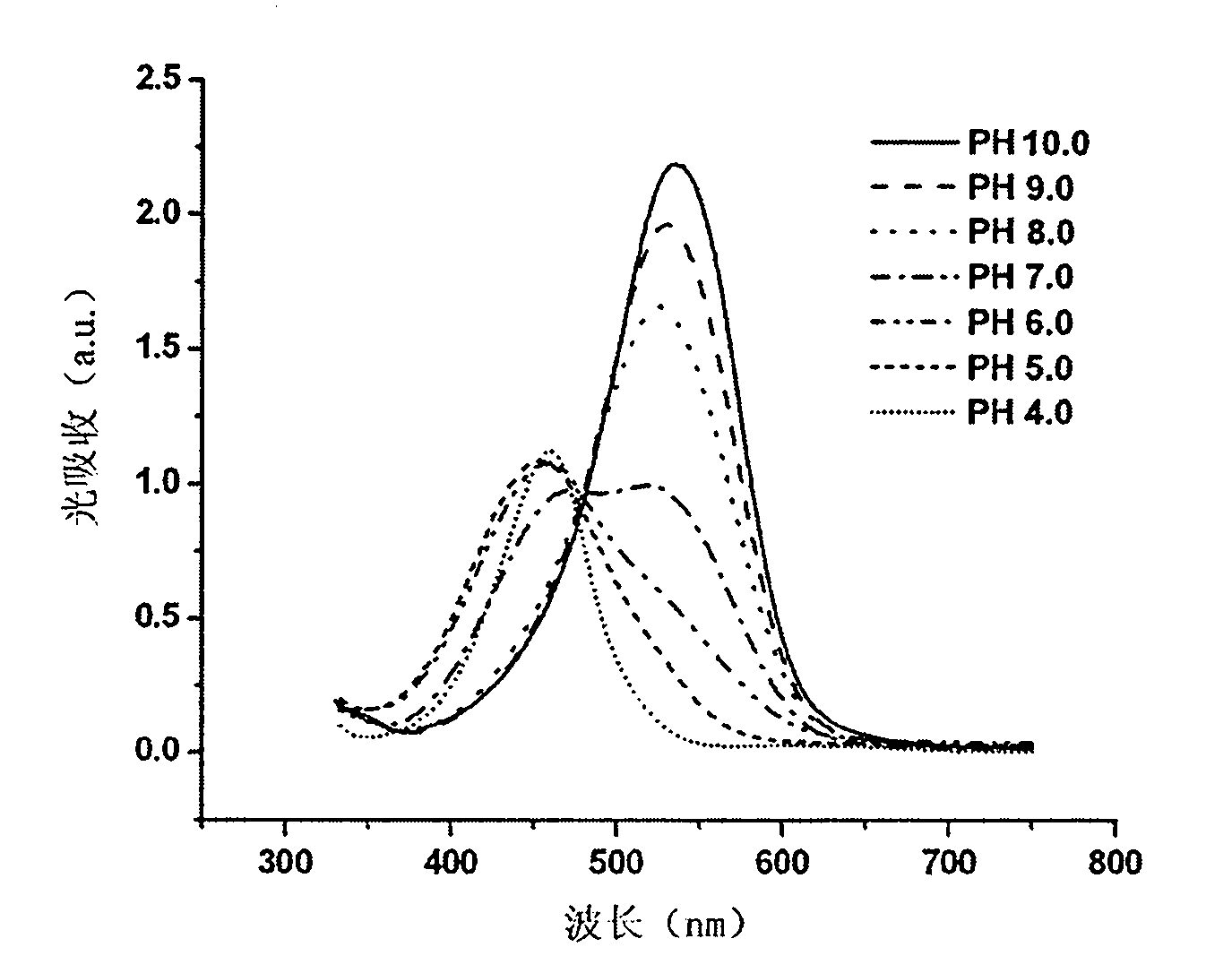Light sound acidity-basicity imaging method and apparatus based on reagent colour development difference
A pH and reagent technology, applied in the field of pH measurement, can solve problems such as low accuracy, inability to directly measure solid objects, and difficulty in color resolution, and achieve the effect of expanding the scope of application
- Summary
- Abstract
- Description
- Claims
- Application Information
AI Technical Summary
Problems solved by technology
Method used
Image
Examples
Embodiment 1
[0035] A photoacoustic pH imaging device based on reagent color difference:
[0036] exist figure 1 Among them, the laser 1-1 emits pulsed laser light, which is reflected by the coating mirror 1-2 to the condenser lens 1-3 and then irradiates the sample to be tested to generate a photoacoustic signal. The laser 1-1 is a TII laser produced by the Belarusian LOTIS company that can emit continuously adjustable wavelengths of 350-500nm, 690nm-1000nm, and pulsed lasers of 532nm and 1064nm. The wavelength resolutions used by the corresponding photoacoustic pH detection reagent are 460nm and 532nm.
[0037]Acoustic signal collection is that the ultrasonic detector 3-2 amplifies the photoacoustic signal received by the detection signal amplifier 4-1 and then sends it to the digital oscilloscope 4-2 and is transmitted and collected by the digital acquisition card 4-3, and then stored in the computer 5 middle. The digital oscilloscope 4-2 is connected to the laser 1-1 at the same ti...
Embodiment 2
[0040] Mix and dissolve 50 mg each of neutral red and methylene blue in 100 mL of ethanol solution, incorporate into multiple sets of pH standard solutions (PH: 4.0-10.0), and prepare 14 groups of photoacoustic acids with the same molar concentration and different pH values Alkali detection solution, the laser emits two wavelengths of laser light successively, and irradiates different groups of photoacoustic acid-base detection solutions; the solution absorbs light energy to generate photoacoustic signals, and uses ultrasonic detectors to receive and record different groups of photoacoustic signals (as shown in table 1); then calculate the ratio of the photoacoustic signal amplitude of two wavelengths under the same pH value, and count its error, depict the photoacoustic pH standard curve as image 3 shown.
[0041] Table 1 Photoacoustic signals of acid-base detection solutions with different pH values under laser irradiation with a wavelength of 532nm
[0042]
[0043] ...
Embodiment 3
[0045] Use industrial wastewater as the sample to be tested, take a small amount of wastewater sample with a beaker, and cover the transparent film at the front end of the photoacoustic pH measuring probe in the sample. The laser outputs pulsed lasers with wavelengths of 532nm and 460nm respectively, and the laser output energy is determined by the pulse power meter. (Ophir Nova II) measurement, and ensure that the output energy of the two wavelengths is the same, and then record the photoacoustic signal before and after adding the photoacoustic acid-base indicator to the tested sample. The tested sample is also tested with the PH test pen (PHTestr 30) to monitor. Photoacoustic measurement results such as Figure 4 with Figure 5 as shown, Figure 4 It is the photoacoustic signal of industrial wastewater excited by a laser with a wavelength of 532nm, where the dotted line is the photoacoustic signal of pure industrial wastewater, and the solid line is the photoacoustic signa...
PUM
| Property | Measurement | Unit |
|---|---|---|
| wavelength | aaaaa | aaaaa |
| radius | aaaaa | aaaaa |
Abstract
Description
Claims
Application Information
 Login to View More
Login to View More - R&D
- Intellectual Property
- Life Sciences
- Materials
- Tech Scout
- Unparalleled Data Quality
- Higher Quality Content
- 60% Fewer Hallucinations
Browse by: Latest US Patents, China's latest patents, Technical Efficacy Thesaurus, Application Domain, Technology Topic, Popular Technical Reports.
© 2025 PatSnap. All rights reserved.Legal|Privacy policy|Modern Slavery Act Transparency Statement|Sitemap|About US| Contact US: help@patsnap.com



